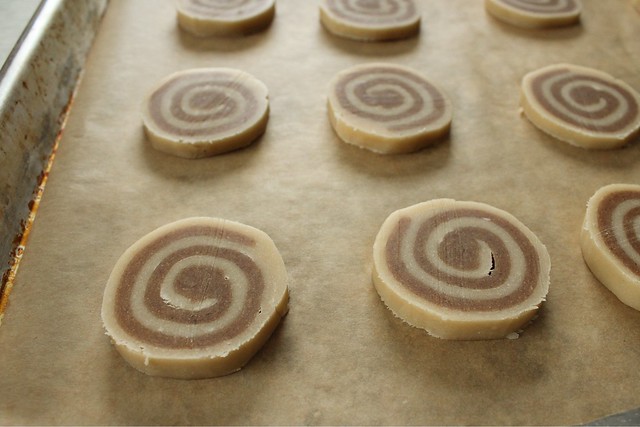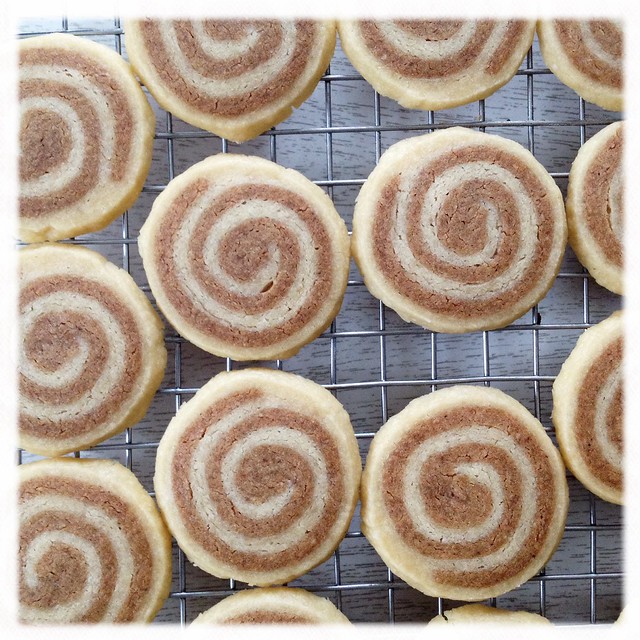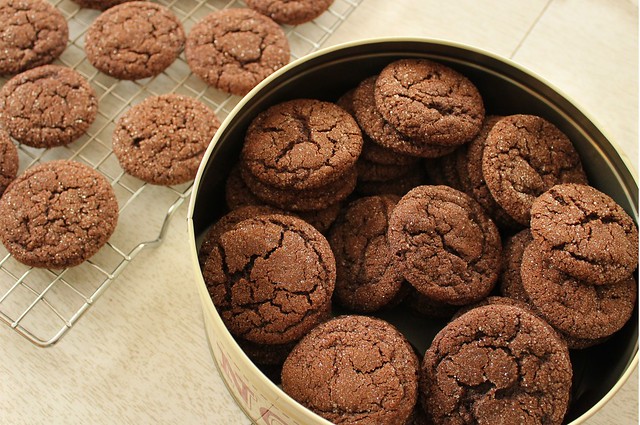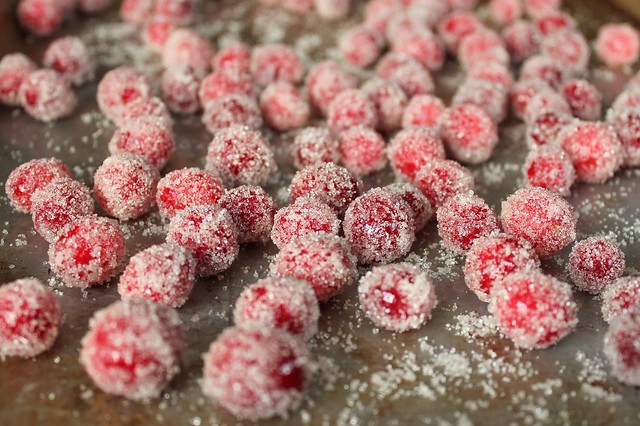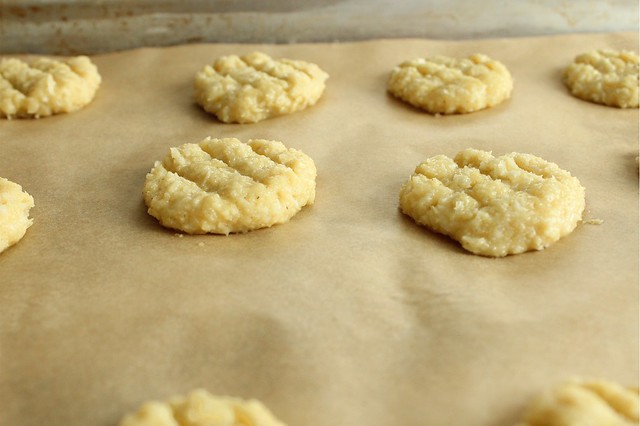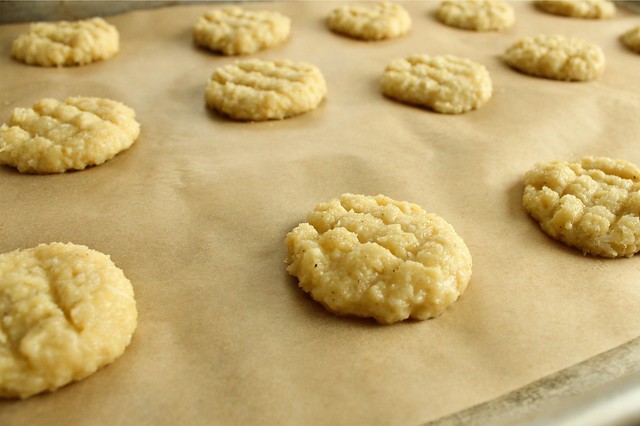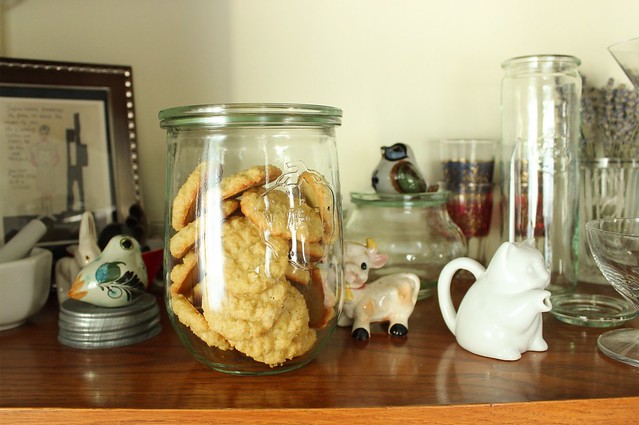What makes a Christmas cookie a Christmas cookie? I ask myself this question every year as I prepare to bake. Since I became a full-time homemaker I usually organize my thoughts and baking pantry in November, beginning with a thorough detailing of my kitchen. That didn't happen this year - for some reason the time is flying much faster than I can fathom. But I'm nearly done with my baking for the season, using my method of batch-a-day baking, which I pretty much have always done around Christmastime since setting off on my own. It might be hard to make 12 kinds of cookies in a single day, but 12 types over a couple of weeks, even when holding down a couple of jobs is surprisingly easy. Or maybe just surprisingly easy for someone who loves to bake.
Frequently I end up with more than 12 types of sweets, but 12 is my goal for a nice selection for a cookie plate or tin. I like to choose naturally long-lasting things to bake first like biscotti, and then move on those that freeze well after baking, leaving any more perishable types for last minute. But I'm not so much an icebox cookie fan; the slice and bake notion is appealing, but requires some finesse that I can't always muster. (But, I did make time and patience enough for these Cinnamon Pinwheels from King Arthur Flour. The dough was a bit tricky and soft, but they paid off.)
I have no rhyme or reason for Christmas cookies, what makes my cookies Christmas cookies is baking them around Christmastime. It's unfortunate that I never make decorated sugar cut-out shapes. My Mom makes dozens and dozens of sugar cookies at Christmas. For the bulk of my youth, visions of wax paper lined countertops with drying cookies decorated by our family signaled that Christmas was almost here. My Mom would spread the icing and my brothers and I, armed with sprinkles and colored sanding sugar, and red hot candies (not to mention the silver dragees that were not intended to be eaten but always were), would take turns making miniature, edible artworks. I don't think I'm exaggerating that some years there were upwards of 70 dozen when we finished. They were stored in big plastic bowls on our old-fashioned, naturally frozen back porch, and given freely to nearly every friend and neighbor.
I can't say that I have many traditions of my own like that. I make different cookies every year, ones that catch my attention here and there, ones that might require slightly more dedication than a non-holiday event cookie. Some are just plain, however. One of my favorites happens to be this one from a decade-old Martha Stewart Magazine: Grammy's Chocolate Cookies. I do make this cookie nearly every year, so I suppose in a way it has become my tradition.
I can't say that I have many traditions of my own like that. I make different cookies every year, ones that catch my attention here and there, ones that might require slightly more dedication than a non-holiday event cookie. Some are just plain, however. One of my favorites happens to be this one from a decade-old Martha Stewart Magazine: Grammy's Chocolate Cookies. I do make this cookie nearly every year, so I suppose in a way it has become my tradition.
These cookies don't seem remarkable, until you pop one in your mouth. They are definitely the cookie that you swear you remember sitting at your grandmother's table eating too many of... along with a glass of cold milk of course. They store well in the freezer and at room temperature, and the recipe makes a lot. I like to use coarser raw sugar for rolling them in; it makes them sparkle a bit more.
I always make the dough the day before using it, or at least several hours before if I'm in a hurry. If you rush it, the butter-heavy dough melts into a big mess when you attempt rolling it into balls. I know from experience. I adapted the way I store the dough to allow for less mess.
I always make the dough the day before using it, or at least several hours before if I'm in a hurry. If you rush it, the butter-heavy dough melts into a big mess when you attempt rolling it into balls. I know from experience. I adapted the way I store the dough to allow for less mess.
Grammy's Chocolate Cookies (Martha Stewart Magazine - but this recipe differs from the in print version)
yield about 6 dozen
- 2 cups + 2 Tablespoons all-purpose flour
- 3/4 cup Dutch cocoa powder
- 1 teaspoon baking soda
- 1/2 teaspoon salt
- 10 oz. butter (2 1/2 sticks) unsalted, butter room temperature
- 2 cups granulated sugar (additional granulated or raw sugar for dipping)
- 2 large eggs
- 2 teaspoons pure vanilla extract
Sift flour, cocoa powder, baking soda, and salt together in a medium bowl. Set aside.
In a large bowl (or the bowl of a stand mixer with the paddle attachment), beat the butter with the sugar and eggs until fluffy, at least 3 minutes. Add the vanilla, and beat another minute to combine. (Scrape down the sides of the bowl as needed.)
Reduce mixer speed to low and add the sifted dry ingredients slowly until just mixed. Spread a sheet of parchment (or cling film will work too) out on the counter, and transfer the dough onto it. Use a knife to spread it into a flattish rectangle, and top with another sheet of parchment (or cling film). Put the dough in the refrigerator for at least 2 hours and up to 2 days. (Make sure the dough is well covered so the air doesn't get at it.)
When ready to bake, preheat the oven to 350, and line sheet pans with parchment paper. Use a bench scraper to portion the dough into 1 inch squares, and roll each between your palms to make balls. Drop them into a bowl of raw sugar (or more granulated sugar) to coat, and place them about 2 inches apart on the baking sheets. (If the dough softens too much at room temperature, pop it back in the fridge as you are waiting on the batches.)
Bake for 10-12 minutes, rotating pans halfway through the baking time. Let the cookies stand on the pans for 5 minutes after baking before transferring to a wire rack to cool completely.

